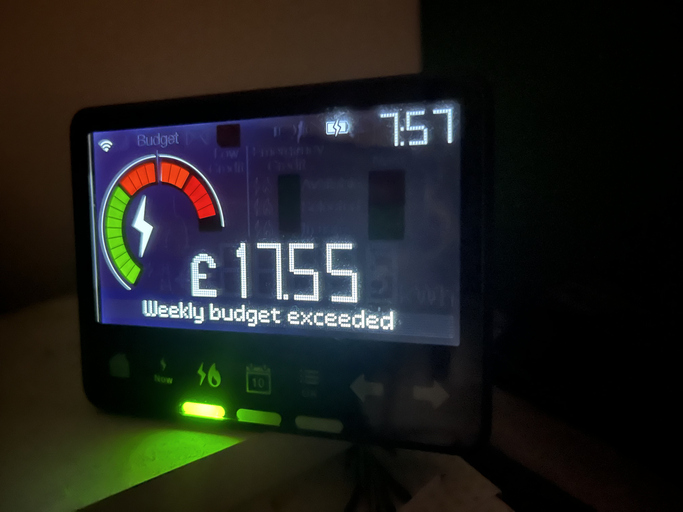Standing charges on energy bills under review amid anger at doubling in last year
Standing charges have increased by over 65% since April 2019, leaving many families struggling to heat their homes

A call for feedback on the energy company standing charge, particularly how it applies to energy bills and what alternatives could be considered, has been launched by Ofgem.
The UK energy regulator is asking charities, consumer groups, businesses, bill-payers and suppliers for their views on the standing charge, and for proposals on alternatives.
Householders across the UK have struggled financially, with many falling into fuel poverty, as a result of energy price rises.
What are standing charges on energy bills?
The standing charge is a daily charge that householders pay their energy supplier each day to cover fixed costs of providing gas and electricity for heating and other domestic needs, regardless of how much energy they use.
The standing charge is used to recover the costs required to provide energy company services, including providing and maintaining the wires, pipes and cables that deliver power to a customer’s door, through to the staff and buildings required for the energy business to function. The charge also varies from region to region because of the differing costs of supplying energy to a particular area.
The standing charge is covered by the energy price cap, which sets a ceiling on how much suppliers can charge for it. Energy companies are also not obliged to have a standing charge and can charge less than what is set out in the price cap. There are already tariffs on the market with no standing charge but a higher unit rate.
Why is there a review of standing charges?
In most areas, the charge has doubled over the last two years. A typical household pays 53p a day for electricity and 30p a day for gas, or an extra £300 to the total bill annually.
Get the Homebuilding & Renovating Newsletter
Bring your dream home to life with expert advice, how to guides and design inspiration. Sign up for our newsletter and get two free tickets to a Homebuilding & Renovating Show near you.
Director for Markets at Ofgem Tim Jarvis said: “We know that standing charges have provoked a huge amount of debate in recent months and with wider cost of living pressures meaning customers will continue to struggle with bills, now is the right time to look at this again.
“The standing charge is covered by the price cap, which puts a ceiling on what suppliers can set it. They’re also under no obligation to have a standing charge and can charge less than what is set out in the price cap.
“However, it’s a complex issue and while an upfront set fee to cover a suppliers fixed costs works for some, it doesn’t work for others. Equally, spreading the costs differently might help some but our previous analysis has found it can also penalise some really vulnerable households.
“So, however we proceed, there is a difficult balance to be struck, which is why it is important as many as people as possible respond to our call for input with their experiences of it, how it affects them and what the alternatives to it could be.”
The energy price cap announcement on 23 November announced a 5% rise in the cap from January to March 2024.
What changes could be made?
Ofgem looked at the issue of standing charges before the energy crisis, and said the findings reveal a complex situation where there are winners and losers.
If the standing charge facility was scrapped, suppliers would still have to cover their reasonable costs in other ways, which would mean charging a higher price for every unit of power used.
New Ofgem analysis shows that whilst moving to a charge that reflects how much customers use would benefit low-income households overall, there could be a significant number of customers made worse off, even if they follow energy saving tips.
Ofgem household case studies show there are around 1.2 million low-income households with electric heating who use a large amount of electricity and so would be worse off by roughly twice as much as those who benefit.
Historically, customers on prepayment meters (PPM) have paid higher standing charges than Direct Debit customers, reflecting the higher cost to serve of these customers. The Government is currently subsidising PPM customers through the Energy Price Guarantee, to ensure that they pay no more for their energy than Direct Debit customers, but this support is due to expire at the end of March 2024.
Ofgem has been working on a replacement for this scheme and will be publishing a statutory consultation ‘minded to position’ shortly, following positive stakeholder feedback and updated analysis which continues to support the policy.

Peter Smith from fuel poverty charity National Energy Action said: “Standing charges aren’t just a matter for the energy suppliers or the energy regulator. How much people pay is often due to government policy.
“If there was the political will to prioritise these issues in the Autumn Statement, the UK Government could cut standing charges to zero for prepayment customers this winter. This would particularly benefit those who are more likely to have missed out on support last winter like the £400 discount Energy Bill Support Scheme and who are much more likely to in debt or struggling now to afford their bills.
“In the longer term, more policies should be paid out of taxation and Ofgem should be encouraging suppliers to reflect a customer’s usage when they recover these charges, or a customer’s payment method, which fuels they use, or their ability to pay.”
The call for input on standing charges is open now until Friday 19 January 2024, and Ofgem is interested in hearing ideas from any interested parties at StandingCharges@ofgem.gov.uk
Sam is based in Coventry and has been a news reporter for nearly 20 years. His work has featured in the Mirror, The Sun, MailOnline, the Independent, and news outlets throughout the world. As a copywriter, he has written for clients as diverse as Saint-Gobain, Michelin, Halfords Autocentre, Great British Heating, and Irwin Industrial Tools. During the pandemic, he converted a van into a mini-camper and is currently planning to convert his shed into an office and Star Wars shrine.

